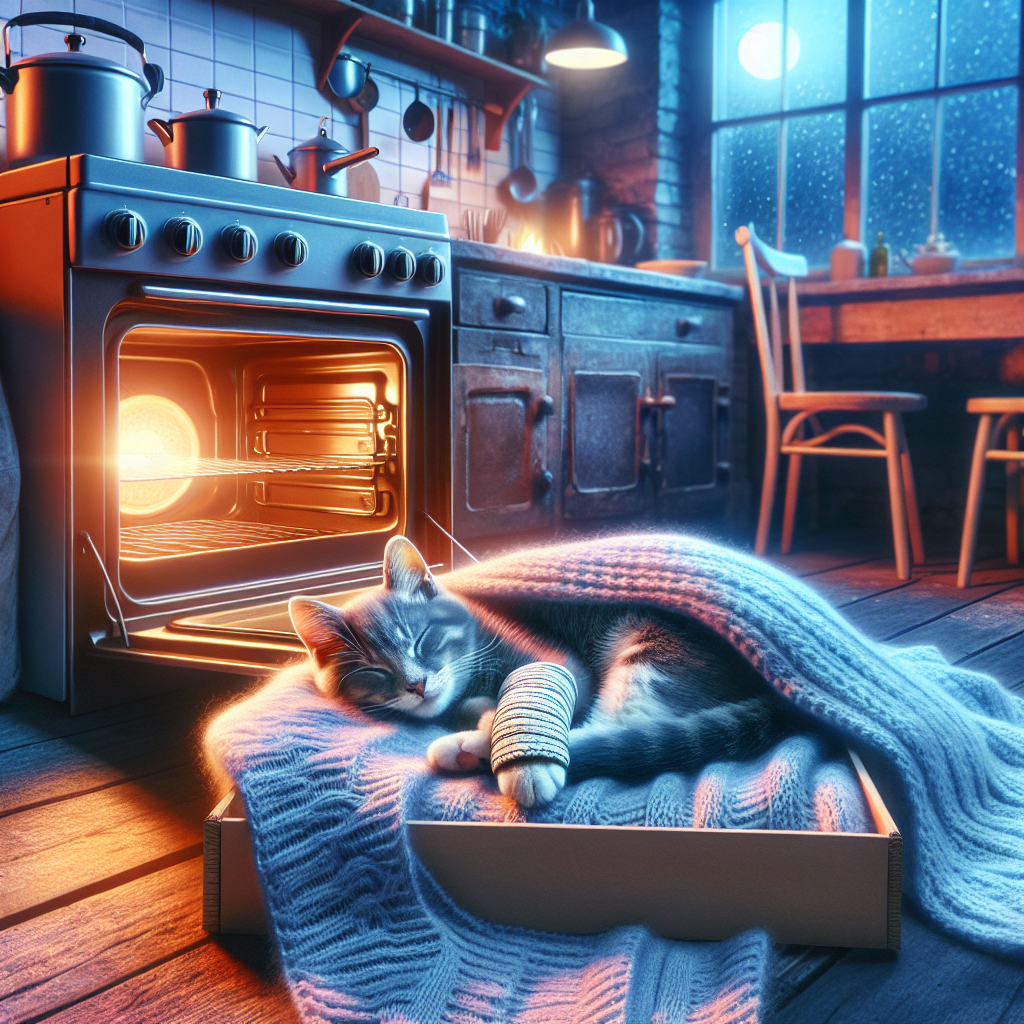===INTRO:===
When you think about the risks that cats face in a home, the dangers of fire might not immediately come to mind. However, my cat’s paw injury from the stove serves as a stark reminder of the potential hazards lurking in our kitchens. Understanding these risks not only helps safeguard our beloved pets but also empowers us to take preventative measures. In this article, we will delve into assessing the dangers of household fires, particularly in relation to our feline friends, and provide key insights on recognizing symptoms and effective treatments for paw injuries in cats.
Assessing the Dangers: A Cat’s Close Encounter with Fire
Kitchens are often the heart of the home, a place where culinary creativity flourishes, but they can also be a battleground for safety. Stoves, boiling liquids, and even open flames pose significant risks, especially to inquisitive cats. Cats, known for their agile movements and curious nature, often venture too close to these sources of danger. The heat radiating from a stove can lead to serious injuries that not only hurt your pet but also create emotional distress for owners who feel helpless.
The likelihood of a cat sustaining a paw injury from a hot surface or an open flame is higher than one might imagine. Cats may jump or climb onto counters and stoves, where they can inadvertently come into contact with hot surfaces. Such close encounters with fire can result in burns that may require urgent veterinary attention, as well as long-term repercussions such as pain, infections, or even the need for amputations in severe cases.
Mitigating these risks begins with awareness and proactive measures. Installing barriers to limit access to cooking areas or using stove knobs that are pet-proof can significantly reduce the chances of injury. Additionally, educating ourselves about the signs of cat curiosity and awareness can lead to more vigilant supervision in the kitchen. Understanding how quickly a cat can react to a stimulus, like a sizzling sound or an enticing aroma, arms us with the knowledge we need to protect our furry companions.
Recognizing Symptoms and Treatment for Paw Injuries in Cats
Understanding how to identify paw injuries in cats is crucial for effective intervention. If you notice your cat limping, favoring one paw, or exhibiting signs of discomfort when walking, a paw injury could be the culprit. Look for visible symptoms, such as swelling, redness, or blistering on the paw pads. Additionally, if your cat is less active than usual or is grooming excessively, these could be indicators of pain or discomfort stemming from an injury.
Once you recognize the signs of a paw injury, immediate action is necessary. First, ensure your cat is calm and safe from further injury. If the injury is a burn from the stove or another source, rinse the affected area gently with cool water for about 10 to 15 minutes to help soothe the pain and cool the burn. Avoid using ice directly, as it may worsen the injury. After cooling, applying a sterile, non-stick bandage can protect the injury from infection while you prepare to consult with your veterinarian.
Veterinary intervention is often essential for proper diagnosis and treatment. A veterinarian may prescribe medications for pain and inflammation, and in some cases, antibiotics to prevent infection. They may also recommend specialized bandages or ointments tailored to your cat’s injury. Regular follow-up appointments may be necessary, especially for serious injuries, to monitor healing and adjust treatment plans as needed. Ultimately, understanding how to recognize and address paw injuries can significantly improve your cat’s recovery journey.
===OUTRO:===
In summary, navigating the potential risks associated with cats and household stoves is imperative for every cat owner. By assessing the dangers that exist in kitchens and being vigilant about recognizing injury symptoms, you can take proactive steps to protect your furry friend. Understanding the nuances of treatment not only aids in quick recovery but also fosters a deeper bond between you and your pet. If you haven’t yet evaluated your kitchen for potential hazards, now is the perfect time to ensure a safer environment for your beloved companion. Your cat deserves a space where curiosity thrives without the risk of injury. Take the initiative today and explore ways to create a safer home for your feline friend.
